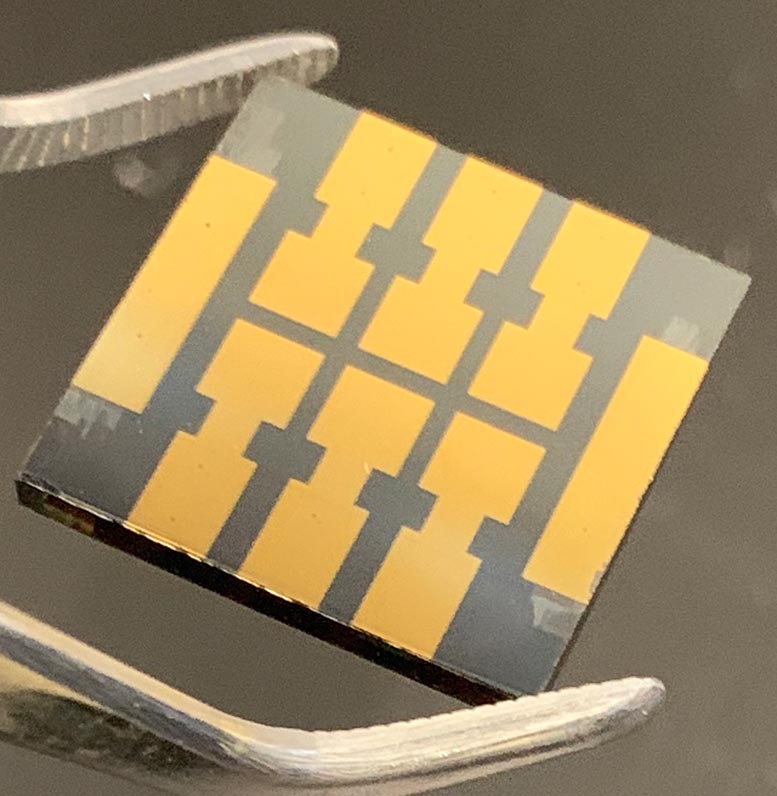
In a study to be published on Friday, May 7, 2021, in the journal Science, the team demonstrates a “molecular glue” that keeps a key interface inside cells from degrading.
“There have been great strides in increasing the power-conversion efficiency of perovskite solar cells,” said Nitin Padture, a professor of engineering at Brown University and senior author of the new research.A little over a decade ago, researchers showed that perovskites are very good at absorbing light, which set off a flood of new research into perovskite solar cells.
The efficiency of those cells has increased quickly and now rivals that of traditional silicon cells.
The difference is that perovskite light absorbers can be made at near room temperature, whereas silicon needs to be grown from a melt at a temperature approaching 2,700 degrees Fahrenheit.
Perovskite films are also about 400 times thinner than silicon wafers.
The relative ease of the manufacturing processes and the use of less material means perovskite cells can be potentially made at a fraction of the cost of silicon cells.
While the efficiency improvements in perovskites have been remarkable, Padture says, making the cells more stable and reliable has remained challenging.“A chain is only as strong as its weakest link, and we identified this interface as the weakest part of the whole stack, where failure is most likely,” said Padture, who directs the Institute for Molecular and Nanoscale Innovation at Brown.“This is a large class of compounds,” Padture said.“When we introduced the SAMs to the interface, we found that it increases the fracture toughness of the interface by about 50%, meaning that any cracks that form at the interface tend not to propagate very far,” Padture said.Testing of solar cell function showed that the SAMs dramatically increased the functional life of the perovskite cells.“One of the other things we did, which people don’t normally do, is we broke open the cells after testing,” said Zhenghong Dai, a Brown doctoral student and first author of the research.Importantly, Padture said, the improvement in toughness did not come at the cost of power-conversion efficiency.In fact, the SAMs actually improved the cell’s efficiency by a small amount.
So the addition of SAMs would potentially add little to the production cost, Padture said.
Now that they’ve fortified the weakest link in the perovskite solar cell stack, they’d like to move onto the next weakest, then the next and so on until they’ve fortified the entire stack.
“This is the kind of research that’s required in order to make cells that are inexpensive, efficient, and perform well for decades,” Padture said.